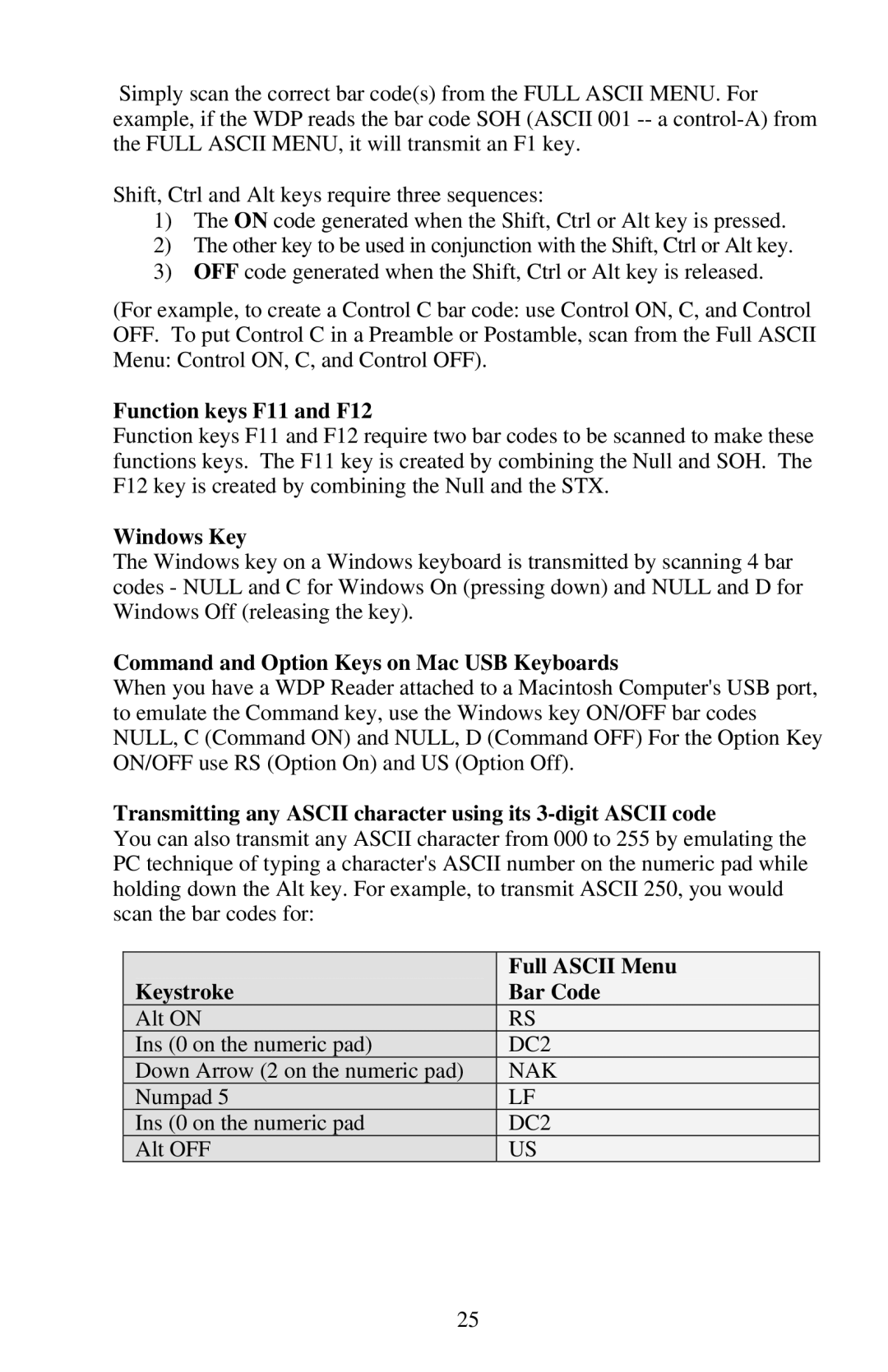Simply scan the correct bar code(s) from the FULL ASCII MENU. For example, if the WDP reads the bar code SOH (ASCII 001
Shift, Ctrl and Alt keys require three sequences:
1)The ON code generated when the Shift, Ctrl or Alt key is pressed.
2)The other key to be used in conjunction with the Shift, Ctrl or Alt key.
3)OFF code generated when the Shift, Ctrl or Alt key is released.
(For example, to create a Control C bar code: use Control ON, C, and Control OFF. To put Control C in a Preamble or Postamble, scan from the Full ASCII Menu: Control ON, C, and Control OFF).
Function keys F11 and F12
Function keys F11 and F12 require two bar codes to be scanned to make these functions keys. The F11 key is created by combining the Null and SOH. The F12 key is created by combining the Null and the STX.
Windows Key
The Windows key on a Windows keyboard is transmitted by scanning 4 bar codes - NULL and C for Windows On (pressing down) and NULL and D for Windows Off (releasing the key).
Command and Option Keys on Mac USB Keyboards
When you have a WDP Reader attached to a Macintosh Computer's USB port, to emulate the Command key, use the Windows key ON/OFF bar codes NULL, C (Command ON) and NULL, D (Command OFF) For the Option Key ON/OFF use RS (Option On) and US (Option Off).
Transmitting any ASCII character using its
You can also transmit any ASCII character from 000 to 255 by emulating the PC technique of typing a character's ASCII number on the numeric pad while holding down the Alt key. For example, to transmit ASCII 250, you would scan the bar codes for:
| Full ASCII Menu |
Keystroke | Bar Code |
Alt ON | RS |
Ins (0 on the numeric pad) | DC2 |
Down Arrow (2 on the numeric pad) | NAK |
Numpad 5 | LF |
Ins (0 on the numeric pad | DC2 |
Alt OFF | US |
25
